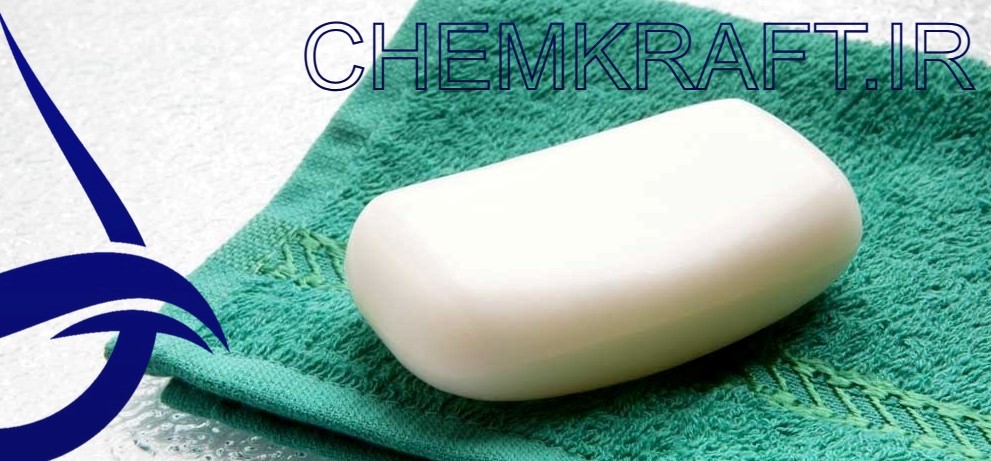1. Introduction to working with caustic soda for soap making
Common Mistakes when Working with Caustic Soda: Working with caustic soda, also known as sodium hydroxide, is an essential aspect of soap making. Caustic soda plays a crucial role in the saponification process, transforming oils and fats into soap. However, it is important to handle caustic soda with caution and adhere to strict safety measures to prevent accidents or mishaps. This article aims to provide guidance on working with caustic soda for soap making, highlighting common mistakes to avoid and emphasizing the significance of safety precautions. By understanding the proper handling, measurement, and storage techniques, soap makers can ensure a smooth and successful soap production process while prioritizing personal safety.
1. Introduction to working with caustic soda for soap making
1.1 What is caustic soda?
Caustic soda, also known as sodium hydroxide, is a powerful chemical compound that is commonly used in soap making. It is highly alkaline and can be dangerous if not handled properly.
1.2 Importance of using caustic soda in soap making
Caustic soda plays a vital role in soap making as it is responsible for the saponification process, which converts fats or oils into soap. Without caustic soda, you wouldn’t be able to create those luxurious bars of soap we all love. However, it’s important to remember that caution should be exercised when working with this potent ingredient.
2. Importance of safety precautions when handling caustic soda
2.1 Understanding the hazards of caustic soda
Before you dive into soap making, it’s crucial to understand the hazards associated with caustic soda. This compound can cause severe chemical burns if it comes into contact with your skin or eyes. Inhaling its fumes can also be harmful to your respiratory system. So, it’s better to be safe than sorry and take the necessary safety precautions.
2.2 Essential safety equipment and protective gear
When working with caustic soda, you should always prioritize safety. Protective gear like gloves, goggles, and a face mask are essential to prevent any accidental exposure to the chemical. Additionally, make sure to work in a well-ventilated area to minimize the risk of inhaling its fumes. Remember, safety is not a fashion statement, but it can save you from some serious trouble.
3. Common mistakes to avoid when measuring and mixing caustic soda
3.1 Accurate measurement techniques for caustic soda
When it comes to working with caustic soda, precision is key. One common mistake is improper measurement of caustic soda, which can lead to undesirable results in your soap. Always use a reliable scale and measure your caustic soda accurately according to the recipe. After all, soap making is both an art and a science.
3.2 Proper dilution methods for caustic soda
Dilution is another critical step in handling caustic soda. Carelessly adding water to caustic soda can cause it to heat up rapidly and release dangerous fumes. To avoid this, remember to add caustic soda to water slowly, not the other way around. This way, you’ll prevent any unexpected reactions and keep your workspace drama-free.
4. Proper handling and storage of caustic soda for soap making
4.1 Storing caustic soda in a safe environment
Once you’re done with your soap making session, it’s important to store your caustic soda properly. Keep it in a cool, dry place away from direct sunlight and moisture. Make sure it is stored in a container with a secure lid to prevent any accidental spills or exposure.
4.2 Guidelines for transporting and handling caustic soda
If you need to transport caustic soda, take extra care to avoid any mishaps. Ensure the container is tightly sealed and secured. Always place it in an upright position, away from other chemicals or flammable substances. And, of course, use appropriate protective gear when handling and transporting it. Remember, caustic soda is not a great travel companion, so treat it with caution.
Working with caustic soda for soap making is an exciting and rewarding endeavor, but safety should always be your top priority. By understanding the hazards, taking necessary precautions, and avoiding common mistakes, you’ll be well on your way to creating fabulous soaps without any unwanted drama. So, go ahead, unleash your creativity, and dive into the sudsy world of soap making!
5. Understanding the effects of caustic soda on different soap ingredients
5.1 Chemical reaction between caustic soda and oils/fats
When it comes to making soap, understanding the chemical reaction between caustic soda and oils/fats is key. Caustic soda, also known as sodium hydroxide, is what transforms these ingredients into soap through a process called saponification. It’s like a magical alchemy, but with science!
Caustic soda reacts with the oils or fats in your soap recipe, breaking down their molecules and creating soap molecules. This reaction is known as saponification. The type and amount of oils or fats you use will determine the properties of your soap, such as its lather, hardness, and moisturizing capabilities.
5.2 Impact of caustic soda on fragrances and additives
Caustic soda can also have an impact on fragrances and additives in your soap. Some ingredients may be sensitive to the high pH of caustic soda, causing them to lose their scent or effectiveness. That’s why it’s important to choose fragrance oils or essential oils that are known to withstand the saponification process.
Similarly, certain colors or additives may react with caustic soda, resulting in unexpected changes in appearance or performance. It’s always a good idea to test your additives beforehand and make sure they play well with caustic soda.
6. Avoiding common errors during the saponification process with caustic soda
6.1 Achieving the proper temperature for saponification
One common mistake when working with caustic soda is not achieving the proper temperature during saponification. The ideal temperature range for saponification is usually around 90-110°F (32-43°C). If the temperature is too low, the reaction may be slower and incomplete. If it’s too high, you risk scorching your oils/fats and affecting the quality of your soap. So, keep an eye on that thermometer!
6.2 Balancing the ratio of caustic soda to oils/fats
Another common error is not getting the caustic soda to oils/fats ratio just right. The ratio is crucial for a successful saponification process. Too much caustic soda can result in a lye-heavy soap that can be harsh on the skin, while too little can lead to an oil-heavy soap that doesn’t lather properly.
It’s essential to follow a reliable soap recipe and measure your ingredients accurately. A good rule of thumb is to use a lye calculator to determine the exact amount of caustic soda needed for the specific oils/fats you’re using. And remember, precision is key!
7. Troubleshooting common issues encountered when using caustic soda in soap making
7.1 Dealing with lye heavy or oil heavy soap
If you find yourself with a lye-heavy soap that feels harsh on the skin, don’t panic! You can rebatch it by grating the soap and adding more oils/fats to balance out the excess lye. On the other hand, if you have an oil-heavy soap that refuses to lather, you can try adding a small amount of additional caustic soda solution and reprocessing the soap.
Remember, mistakes happen, and there’s always a way to salvage your soap!
7.2 Remedies for soap not reaching the desired consistency
Sometimes, your soap might not reach the desired consistency. It could be too soft, too brittle, or just not behaving like you want it to. In such cases, you can try remelting the soap and adjusting the oils/fats, caustic soda, or water content. It might take a bit of trial and error to find the perfect balance, but hey, that’s all part of the fun of soap making!
8. Best practices for working with caustic soda to ensure high-quality soap production
8.1 Following a step-by-step guide for safe caustic soda usage
Working with caustic soda requires caution and safety measures. It’s important to wear protective gear like gloves and goggles to avoid any contact with your skin or eyes. Always add caustic soda to water, not the other way around, as it can cause a dangerous reaction. And remember, ventilation is crucial when handling caustic soda, so make sure you have adequate airflow in your workspace.
Also, don’t forget to have a neutralizing agent, like vinegar or citric acid, on hand in case of accidental spills or splashes. Safety first, folks!
8.2 Tips for testing and evaluating the final soap product
Testing and evaluating your final soap product is essential to ensure its quality. Give your soap time to cure, usually around 4-6 weeks, to allow any excess moisture to evaporate and the soap to harden properly. During this time, you can test the pH level of your soap using pH strips to ensure it falls within the safe range for skin contact.
You can also test the lather and conditioning properties of your soap by using it yourself or giving samples to friends and family for feedback. Remember, constructive criticism can help you improve your soap-making skills!
So, armed with this knowledge, go forth and create your masterpiece with caustic soda and oils/fats. Soap making can be a delightful and rewarding hobby, as long as you avoid common mistakes and have some fun along the way!
In conclusion, working with caustic soda for soap making requires a diligent approach to safety and a careful attention to detail. By avoiding common mistakes in measuring, mixing, and handling caustic soda, soap makers can create high-quality soaps while minimizing risks. Remember to always wear appropriate protective gear, store caustic soda properly, and follow best practices for saponification. With the right knowledge and precautions, working with caustic soda can be a rewarding and fulfilling part of the soap making journey, resulting in beautiful and luxurious handmade soaps.
Frequently Asked Questions (FAQ)
1. Is caustic soda the same as lye?
Yes, caustic soda and lye refer to the same compound, which is sodium hydroxide. Caustic soda is commonly used in soap making as it reacts with oils and fats to create soap through the saponification process.
2. Can I store caustic soda indefinitely?
No, caustic soda should be stored properly and has a limited shelf life. It is best to use caustic soda within a year of purchasing it, as its potency may decrease over time. Always check the expiration date and store it in a cool, dry place in an airtight container.
3. How do I handle caustic soda safely?
It is crucial to handle caustic soda with care. Wear appropriate protective gear such as gloves, goggles, and a lab coat or apron. Always add caustic soda to water, never the other way around, to avoid heat and splashing. Work in a well-ventilated area and be cautious of its corrosive properties.
4. What should I do if I accidentally come into contact with caustic soda?
If you come into contact with caustic soda, immediately rinse the affected area with plenty of water for at least 15 minutes. Remove any contaminated clothing while rinsing. If irritation persists or is severe, seek medical attention promptly.











